Find out which plants can be started now and overwinter for a spring and winter harvest: onions, Brussels sprouts, and more!
Imagine yourself walking around your vegetable garden in early spring. Most of the snow is melted, leaving behind soggy soil with patches of frozen water. The sky is gray, and the breeze is chilly. Mud is absolutely everywhere. It’s hard to imagine this patch of land being habitable to any plant.
Except, you, my friend, thought ahead and planted some especially hardy plants last fall. And this early spring mudbog that is your garden is exactly where they’re thriving! The first sunny day of spring brought them out of hibernation, and now you get to harvest fresh garden carrots, spinach, onions, Brussels sprouts, and more amazing overwintered bounty! Yes, it’s possible—and not just in mild climates. Overwintering veggies is possible in all but the coldest of growing zones, and we’re excited to show you how!
Table of Contents
What is overwintering?
Overwintering in the vegetable garden is the act of planting certain hardy plants in your garden in fall for harvest in early spring of the next year. The plants grow and establish themselves during the warm final days of fall, then go into hibernation mode during the coldest winter days, and then come back and grow with a vengeance as soon as the sun starts to warm the ground in the spring. Because these plants have a months-long head start, they can produce harvests for you before the soil would even be workable enough to plant seeds!
Growfully Protip
Some folks also use the term “overwinter” for when they keep a tender plant overwintered in a protected environment—like potting up a basil plant and bringing it indoors during the winter.

What’s the difference between overwintering and winter gardening/winter harvesting?
Even though they are similar in concept and execution, the main difference between overwintering and winter gardening is your end goals. Most people use the term “overwintering” to refer to crops that are grown through the fall and winter to begin harvests in spring.
On the other hand, “winter gardening” or “winter harvesting” is exactly like it sounds: planning the timing of cold-hardy crops and protecting them properly from the cruel temps of winter in order to harvest goodies all year-long. This is a great way to keep yourself in veggies through most of the year, and it’s also something most gardeners can do with a little plant protection (low tunnels, mulches, cold frames, green houses, etc.), but winter gardening is not what we’re covering in this article.
Growfully Protip
Keep in mind that some plants will fall into both “overwintering” and “winter gardening.” Kale is a good example of this. It’s hardy enough to harvest on through all but the coldest of climate’s winters, but come spring, it’ll also take off and start growing big and strong.
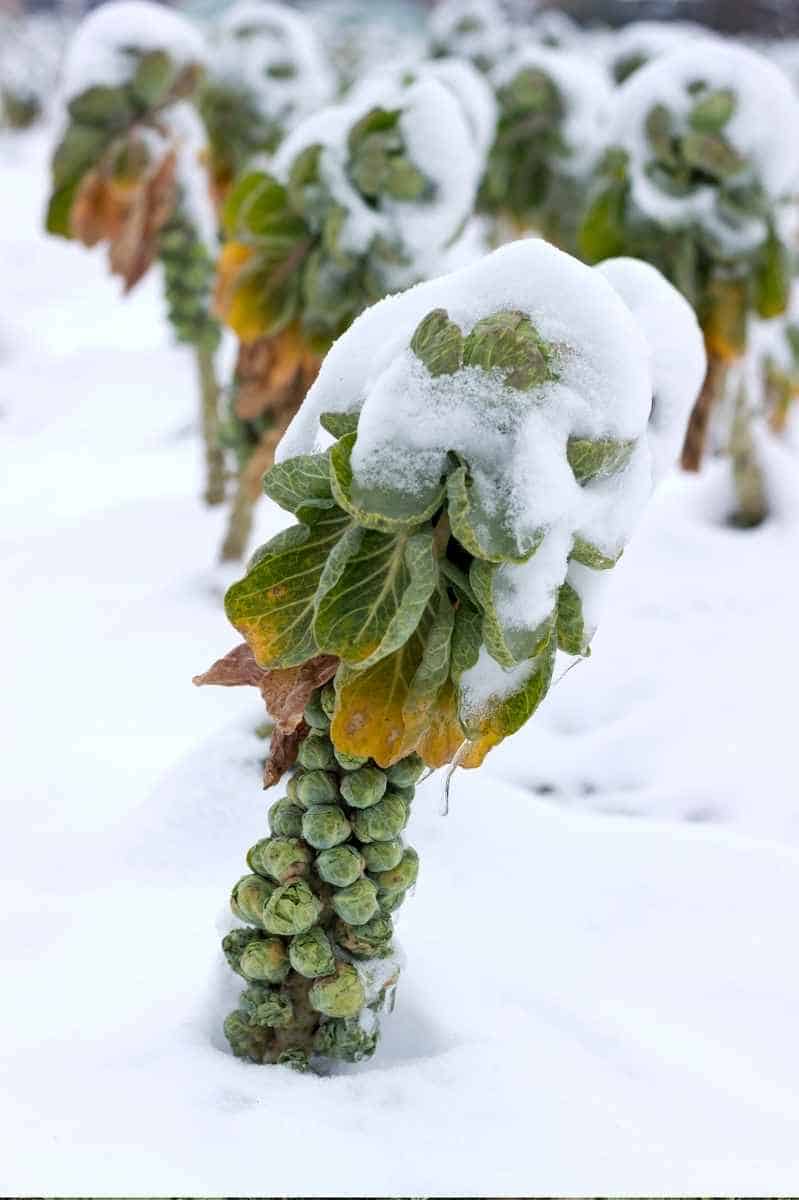
Why should I overwinter vegetable plants?
If you are the kind of gardener who is always eager (maybe overly-eager) to get your plants in the ground come spring, overwintering might be the answer for you. You’ll have crops growing earlier than any other gardener on your block. You’ll be harvesting fresh produce before most planting date calculators tell you you can even start seeds.
Growfully Protip
Certain veggies (I’m looking at you, carrots and Brussels sprouts) taste their best after they’ve gone through a hard freeze. Overwintered carrots are far superior to carrots grown in the spring or fall alone!
Why does overwintering veggies work?
You’ll notice on our list below many of the plants are biennials—meaning it takes two years for them to complete their lifecycle. These plants are genetically predisposed to “make it” through winter and then keep growing the next season in order to produce seed and reproduce. That’s the whole reason why they continue to exist! So we take advantage of that fact in our garden to grow delicious, early veggies for us!
Growfully Protip
Because you are growing into the second year of a biennial plant’s lifecycle when overwintering, don’t be surprised if some of your plants bolt. This doesn’t mean they’re spent! You can still harvest and enjoy, or even let the plant finish up its lifecycle and save the seed.
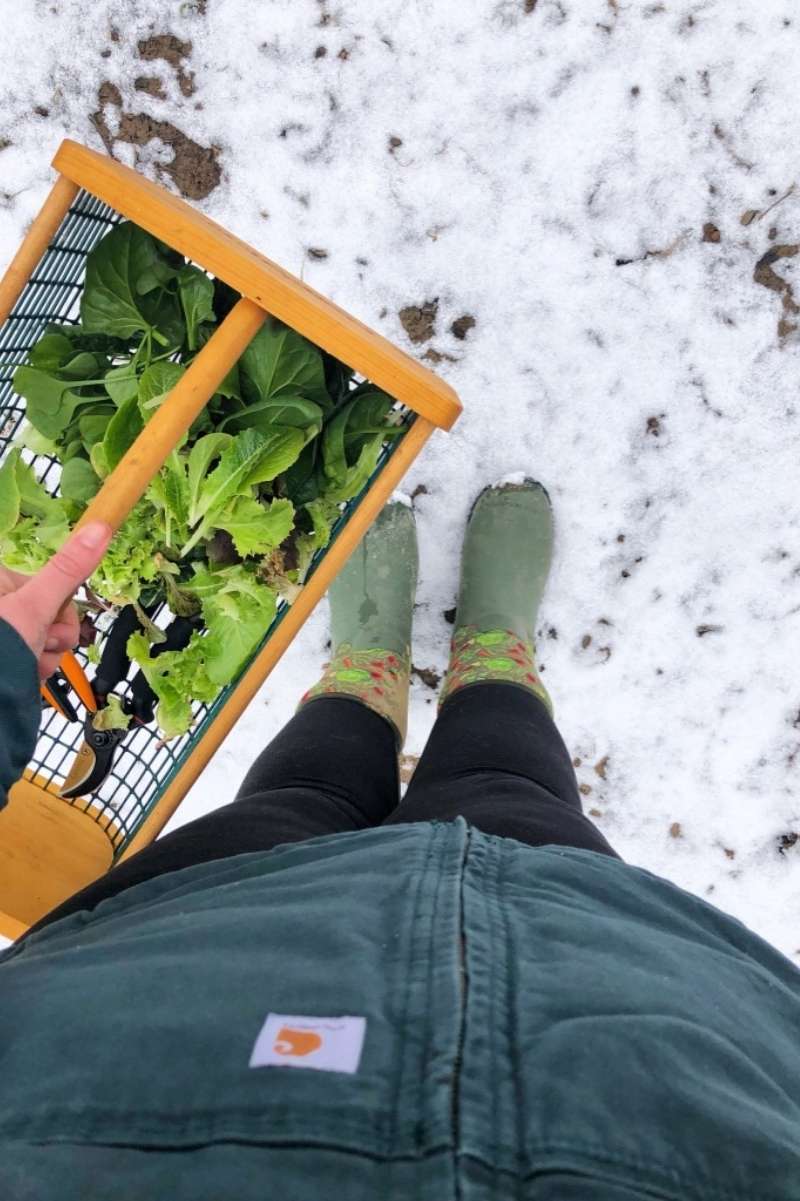
8 Awesome Vegetables to Overwinter
In this article though, we are focusing solely on cool-weather crops that can do okay outside without needing a fancy greenhouse or other accommodations. These are the plants that you can cover with some mulch or frost protection fabric, and they’ll be fine with just that. They’ll enjoy their sleep during the winter and come back big, strong—and most importantly—EARLY in the spring!
Do note that the Growfully Gardens are in hardiness zone 6b, where our winters are a little warmer and less snowy than you’d get further north, so what works for me in Indiana wouldn’t be enough to keep plants alive and producing in say, Minnesota. That being said, gardeners overwinter crops in almost all but the coldest of growing zones, so do a little research and experimentation to figure out what works in your climate!
Growfully Protip
Not all varieties of all veggies listed here are good candidates for overwintering. Our favorite source of seeds that are trialed specifically for overwintering is Johnny’s Selected Seeds.
Onions
Our favorite way to grow onions is to plant onion seeds in late summer for a spring harvest. You can harvest green onions early in spring and full bulb onions before you even plant out your tomatoes! Overwintered onions get larger than onions planted in the spring, and are hardy enough to get through the winter in most climates with a thick layer of mulch or low tunnels. We talk all about when to plant onions for overwintering in our growing guide if you’d like more information.
Growfully Protip
The one caveat here with overwintered onions is they don’t store as long. Onions are a biennial, and since you’re growing your onions into year two by overwintering, they have no need to keep a long storage life to reproduce the next year.
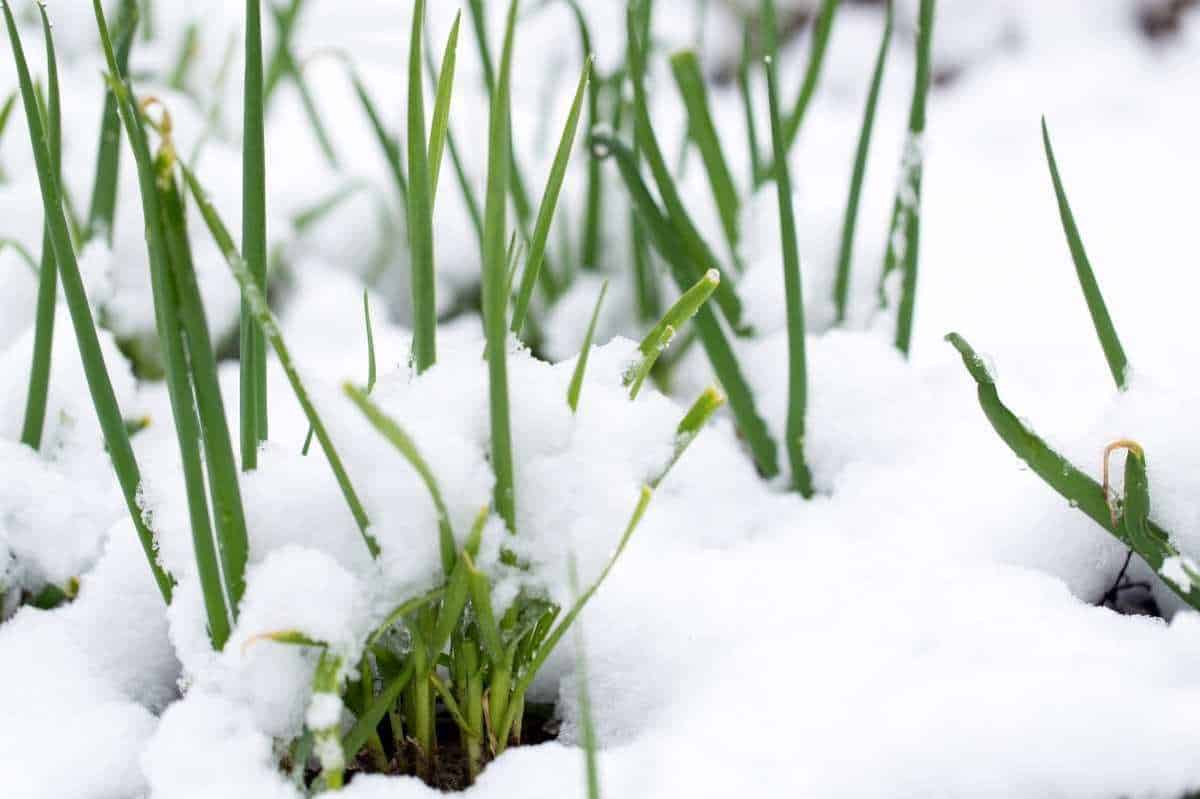
Garlic
Garlic is a perfect vegetable to overwinter! In order to grow garlic with decently-sized bulbs, the plants need to be around 40°F for 4-8 weeks, which mild and cold climates naturally provide in the fall to early winter. To protect plants from the winter weather, apply a 4-6″ thick layer of mulch (we like pine shavings or mulched fall leaves) before the freezing temperatures really hit. Green garlic leaves poking out the top of the mulch in late winter is one of the surest signs that spring is on its way!
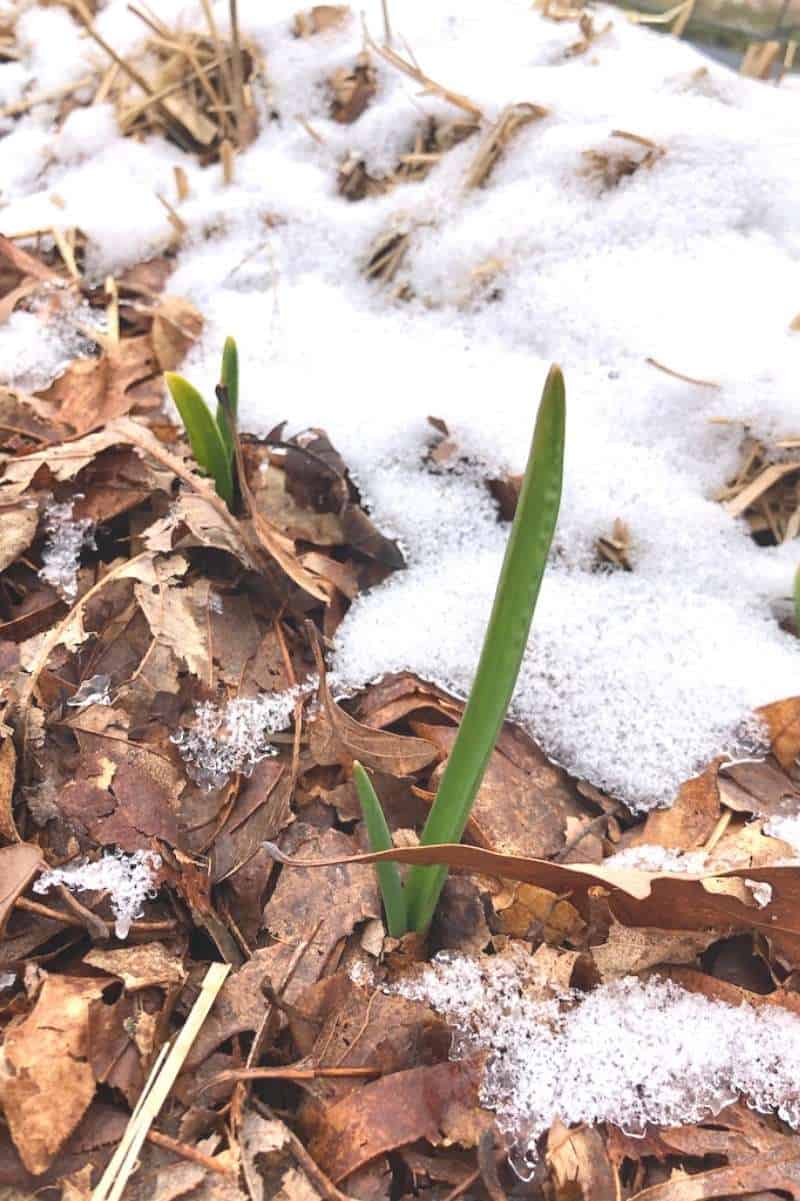
Brussels Sprouts
Plant Brussels sprouts in the fall, and you’ll be able to harvest individual sprouts throughout the fall and winter (in especially cold climates, this may not be possible). In fact, Brussels sprouts taste best after they’ve been through a heavy frost, or even a hard freeze!
In cold climates, use a layer of frost protection cloth around the plants. In zone 6b, we are able to harvest Brussels sprouts from October through April without any protection.

Kale
Oh, mighty, mighty hearty kale! This is an example of a plant that can be used for both winter harvests and overwintering. Kale is hardy down to 10°F—and can even withstand dips below that with a little mulch or other protection. So we like to grow kale for winter harvesting, and then, once spring comes, kale’s biennial nature kicks in and the plant takes off in rapid growth again!
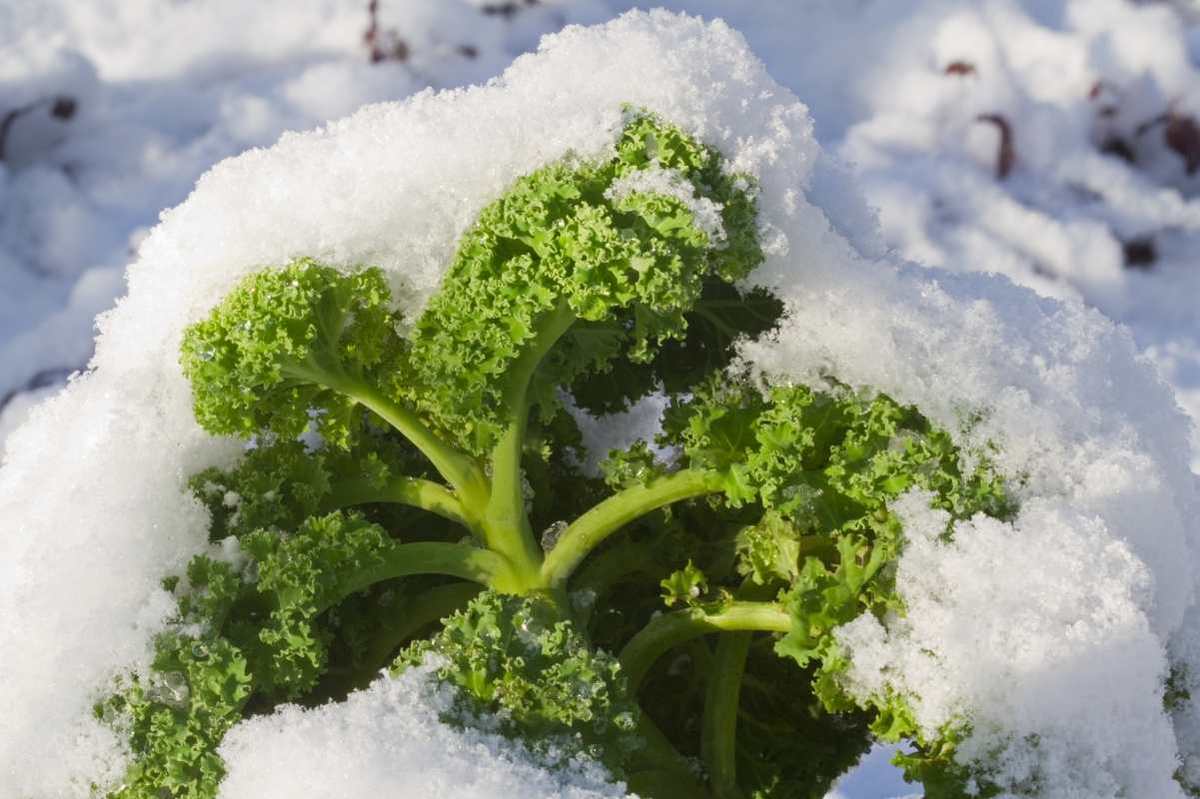
Leeks
Similar to onions and garlic, this allium family member is a perfect candidate for overwintering. We sprinkle leek seeds in the garden in late summer, and then when colder weather comes, we give them a thick layer of mulch to protect them. Come late winter, the leeks will start to take off, and by the time the ground is thawed enough to harvest, you’ll have baby leeks ready for a perfect springtime meal of potato-leek soup!
Growfully Protip
Spring-planted leeks also store well in the winter garden for winter harvesting—just as long as you can keep the ground thawed enough to harvest.

Carrots
If you’re going to overwinter just one crop, please let it be carrots! You haven’t tasted a carrot until you’ve had an overwintered carrot. They are sweet, tender, and so delightfully carrot-y that I recommend planting twice what you think you’ll need—trust me, you’ll snack on them every time you visit your garden.
Plant carrot seeds in early fall and then give them a hefty layer of mulch when winter sets in. The tops won’t look like they are doing much (they may even dieback), but trust me, the roots are still doing their job and growing! You can start harvesting as soon as the soil is thawed enough to do so. In some colder climates, you might want to put a low tunnel or cold frame over the carrots to keep the soil from freezing completely so you can harvest even earlier.
Growfully Protip
In the Growfully Gardens, we typically do two rounds of fall-planted carrots—one started late summer (mid-August here in zone 6b) for enjoying during the fall and early winter. And then a second batch in early fall (mid-September) specifically for overwintering for harvest in the spring.
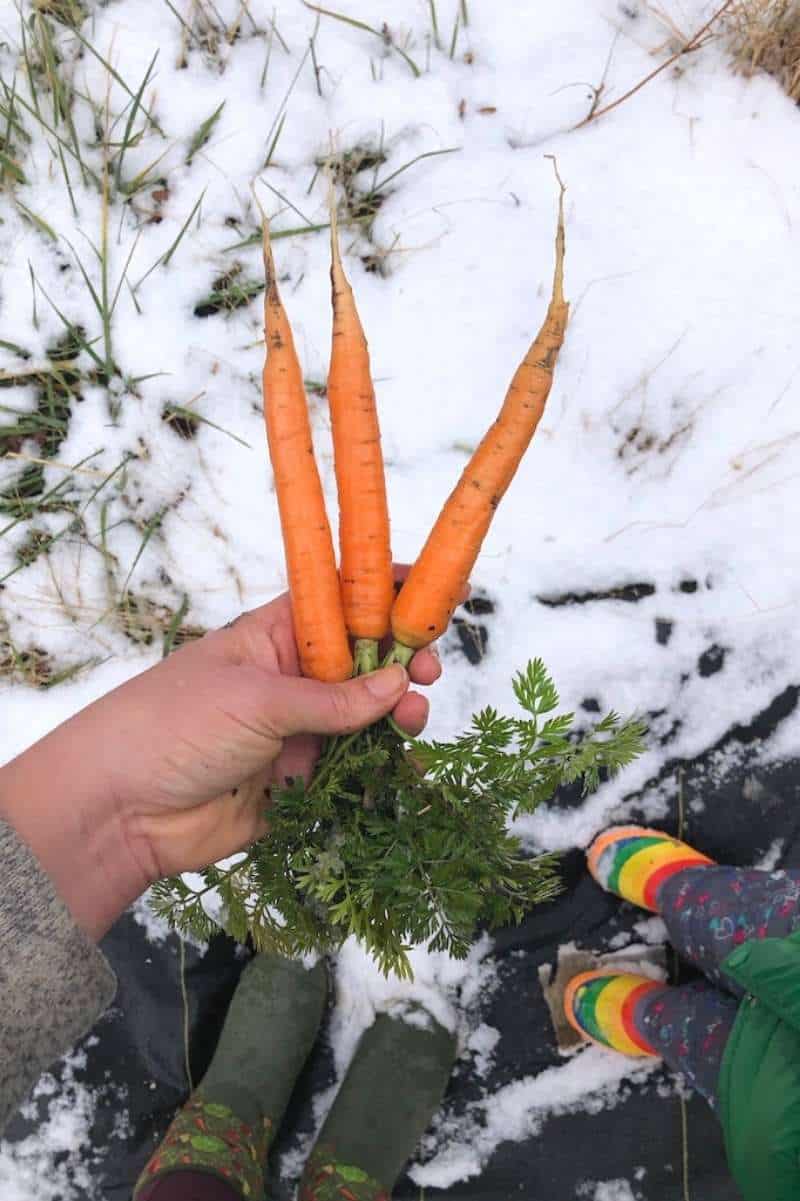
Parsnips
Parsnips are related to carrots and can overwinter very similarly, with two important caveats—parsnips have a much longer days-to-maturity period than carrots, so you’ll need to plan accordingly, and parsnips are much more enjoyable when they are reaching maturity during cold temperatures. For a fall harvest, you can plant seeds in early summer. For a spring harvest, plant seeds mid-to-late summer.

Spinach
Spinach plants are super hardy, so don’t pull your fall spinach plants when the first snow hits! Even if the leaves die back, the roots will live on, and you’ll see spinach popping back up in the spring. In mild and all but the coldest of climates, a good layer of mulch or frost fabric over the spinach should be enough to protect it.
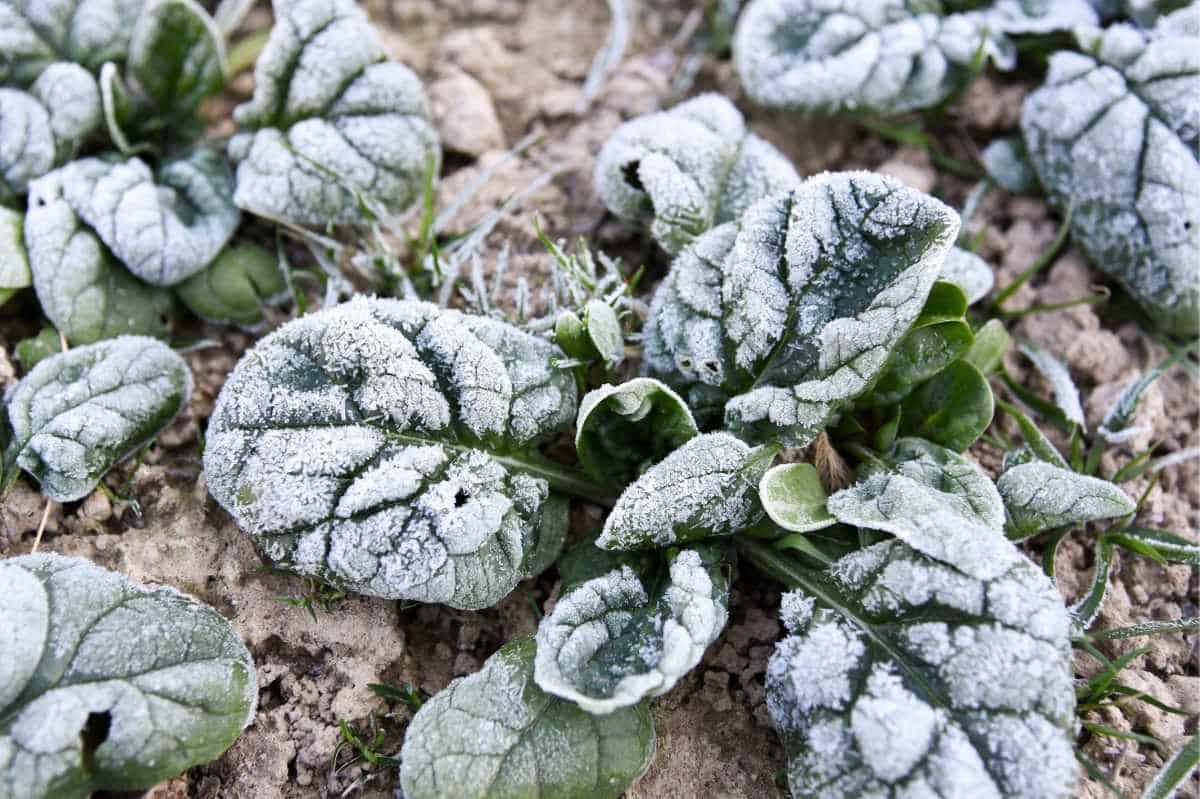
If you live in a climate with a warm fall and germinating spinach seeds is a struggle for you, you can also plant spinach seeds up 2-3 weeks before when your Persephone period begins. What’s the Persephone period? It’s the period of time in your area where day length drops below 10 hours a day and plant growth stalls in dormancy. For us here in Southern Indiana, our Persephone period begins November 17th, and we plant spinach for overwintering all the way through the end of October.
Growfully Protip
You can figure out your Persephone period in your area by putting your location into this daylight calculator, and then viewing the Sunlight Graph to see what day of the year daylight hours drop below 10 hours a day.
Are there other veggies I can overwinter?
Yes! These are just our faves, but depending on your growing zone, you might be able to overwinter tons of different varieties and grow a robust garden all year long. Add some simple plant protections (a cold frame or low tunnel), and your choices are even more expansive! If you’re interested in learning more about overwintering and winter harvest, we highly recommend checking out Eliot Coleman’s books The Four Season Harvest and The Winter Harvest Handbook.

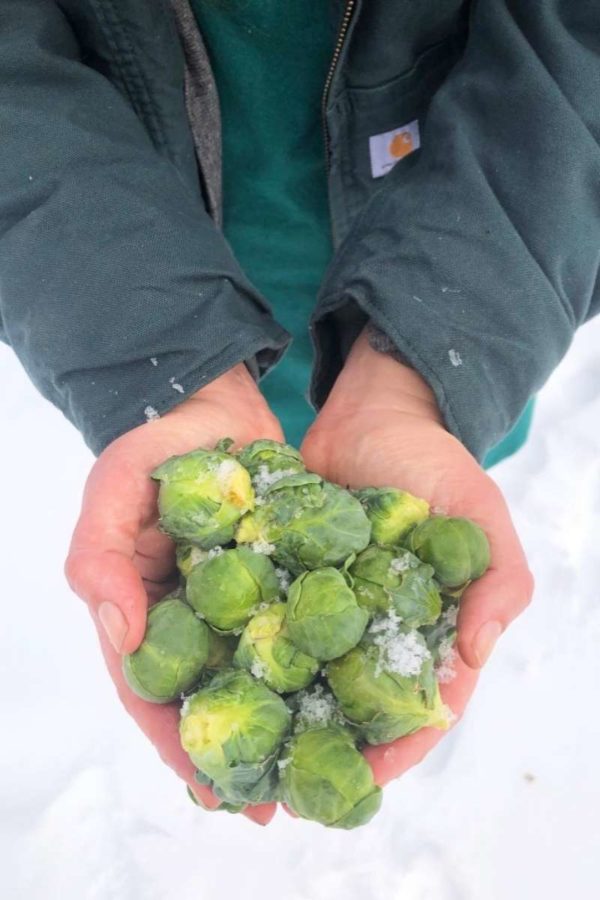






What growing zone are you in? I am in zone 5, almost in Wyoming, so I am not sure if some of the crops will work over winter here or not.
6b!